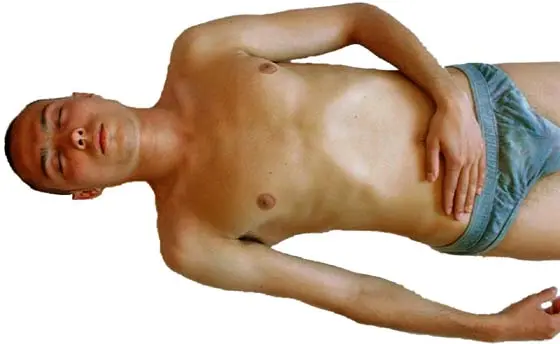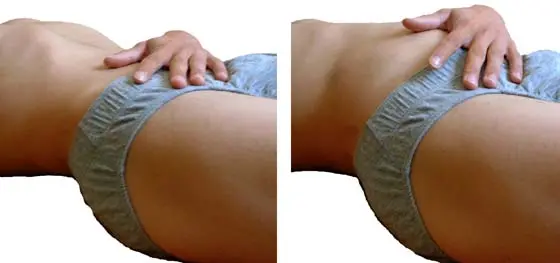|
Qi Energy Exercises
|
Qi Breathing Exercise 2 Lower Your BreathExtending the breath, like in the previous exercise, also makes it deeper — but not to the extent that this below exercise is able.
A breath that is to stimulate the qi flow must take place deep in your body, what is usually called belly breathing or diaphragm breathing. Most people breathe exclusively with their chest, maybe as high up as the shoulders. This leads to short breaths and persistent tension around the shoulders. Such breathing also afflicts the mind with unrest and insecurity. That is as far from relaxation as one can get. The Eastern ideal is instead to breathe with the belly, actually as low as the bottom of the abdomen. Of course it is still the lungs that get the air, but you should feel very clearly that the shoulders relax while your abdomen moves with the breaths you take, as if the air goes all the way down there. Opera singers do the same kind of breathing. It carries their voices better, and gives them power to really sing out. If you have never tried belly breathing, it can be quite tricky to learn. Breathing is something the body does without the conscious mind being involved in it — around the clock, and year after year. Such habits are difficult to change. We continue with the same old habits, if we do not make the proper efforts to alter them. Your body has to learn a new way of doing what it has done in pretty much the same way all your life. Expect it to take time, maybe years, before you are belly breathing without having to think about it. No doubt, you have to practice it daily. First you must find that deep breathing, in the lower abdomen. This is the most effective method I know, to accomplish that. Still, count on quite some time before you get it right.
How to do it
 This exercise is intended to lower the breathing of a person who is not used to breathe with the belly. When you have learned this, it is no longer necessary to repeat the exercise. Later on, you may benefit from testing it now and then, although you know how to belly breathe, just to check that you really breathe as far down in your abdomen as you wish. Do not underestimate the depth of proper belly breathing. If you succeed when you hold your hand in the middle between the navel and your crotch, continue by moving it further down, closer to your crotch, and try again. If you can breathe down at the very bottom of your abdomen, then you have opened your breathing completely. It is advantageous, not to say necessary, to let this exercise be followed by the next one — especially if you are in the process of learning belly breathing, and trying to make it a habit.
Qi Breathing ExercisesHere is a set of simple breathing exercises designed to increase your qi energy flow. I recommend that you do them in the given order, when you try them out. Once you've become familiar with them, you can do them in any order you please. Trust your instincts.
Qi Energy Exercises
Qi Exercise Settings
Qi Energy Breathing
Qi Posture
Qi Relaxation
Qi Extension
Qi Centering
The Book
My Books About Life EnergyHere are the two books I have written on the subject of life energy. This website contains some of the material from the first one. Click the image to see the book at Amazon (paid link).
About CookiesMy Other WebsitesLife EnergyThe many life force beliefs all over the world, ancient and modern, explained.
TaoisticTaoism, the old Chinese philosophy of life, based on Tao, the Way. Also, the complete Tao Te Ching translated and explained.
AikidoAikido, the peaceful martial art. Its basics, principles, techniques, and more — in texts, images and videos.
I Ching OnlineThe 64 hexagrams of the Chinese classic I Ching and what they mean in divination. Free online reading.
Other Books by MeClick the image to see the book at Amazon (paid link).

Stefan StenuddAbout Me I'm a Swedish author and aikido instructor. I've written several books about aikido, qi energy and other life force concepts. I'm also an historian of ideas, researching the thought patterns in creation myths. Click the image to get to my personal website. Contact
|
 Qi — Increase Your Life Energy
Qi — Increase Your Life Energy


